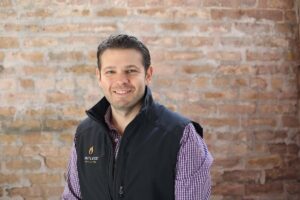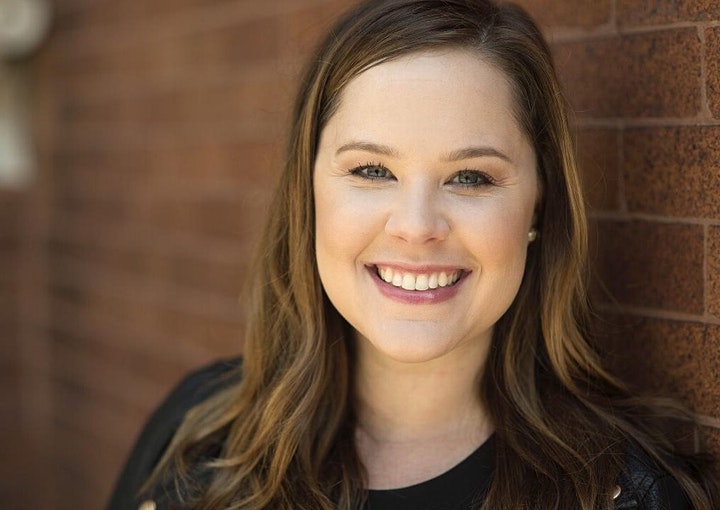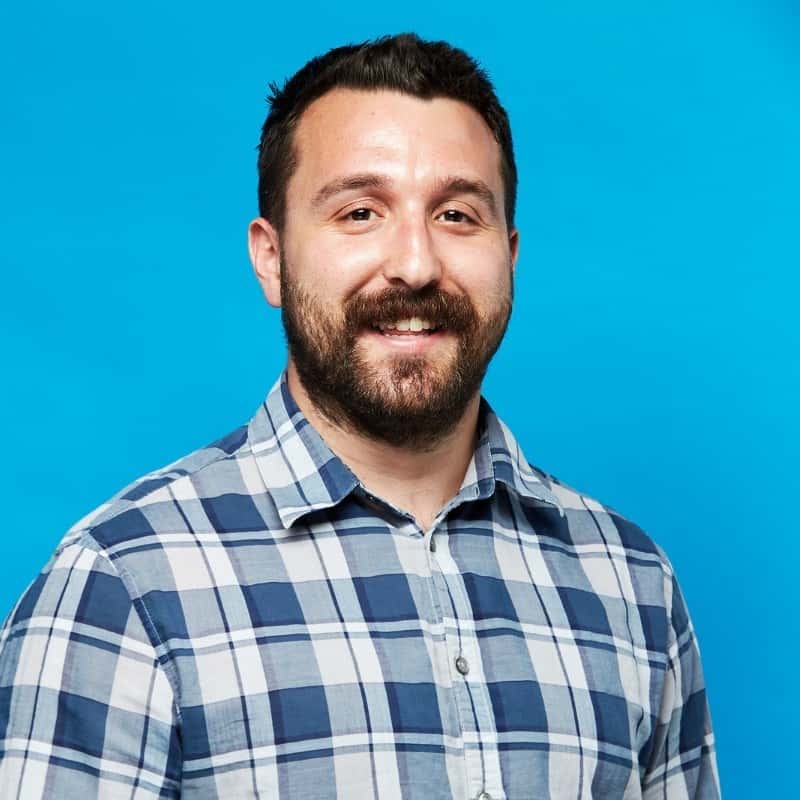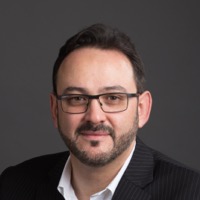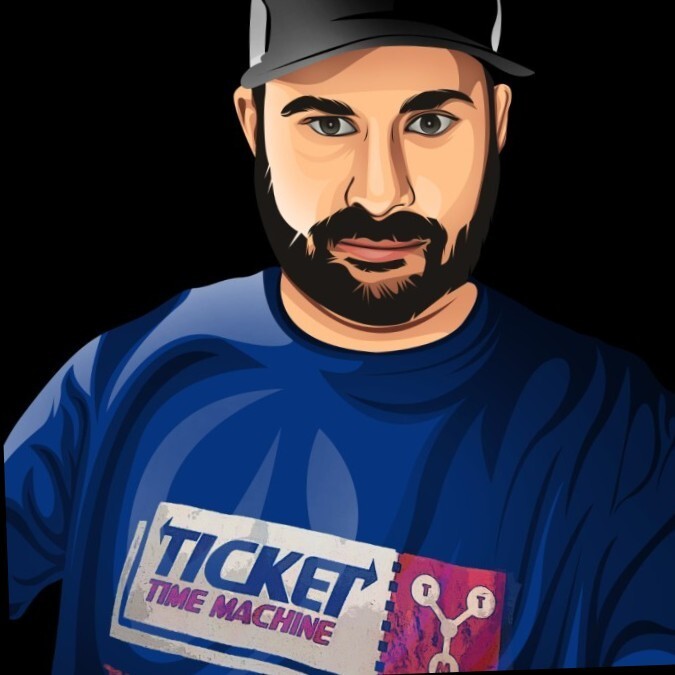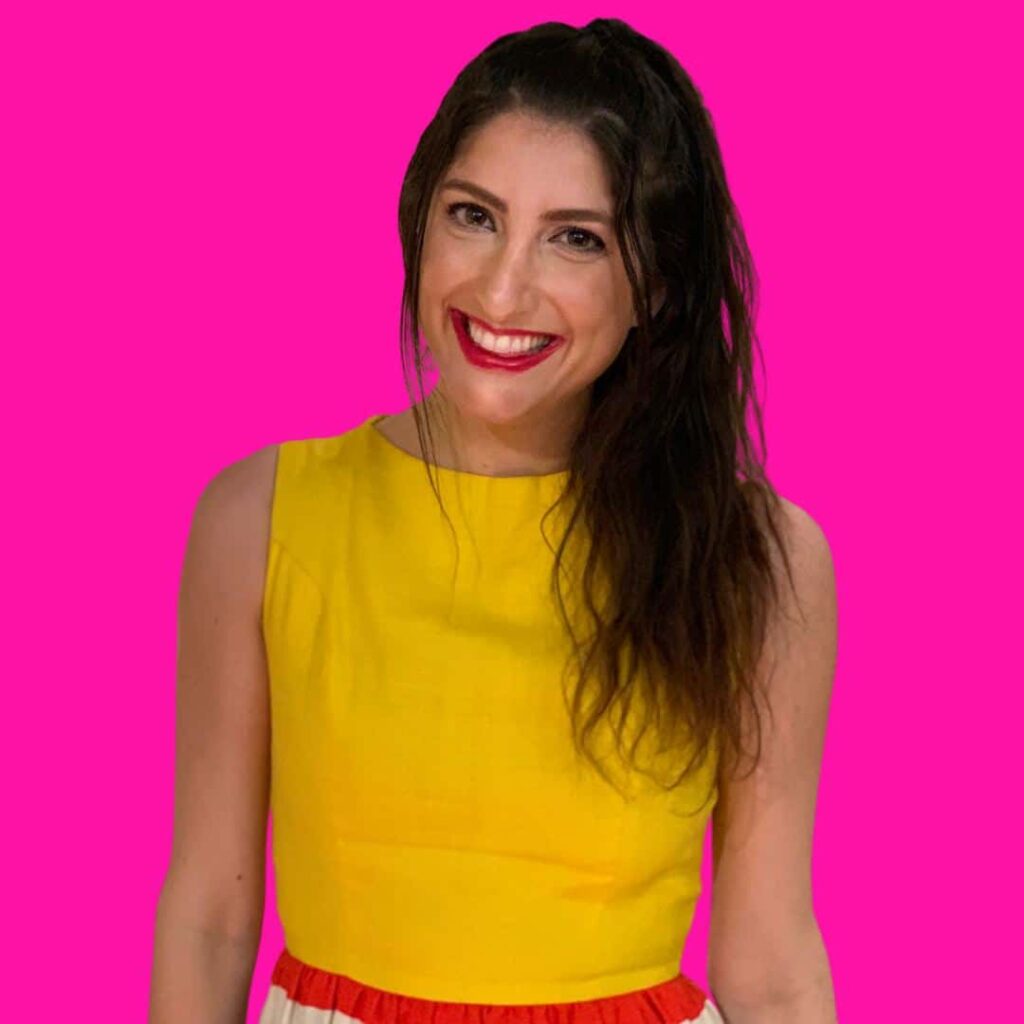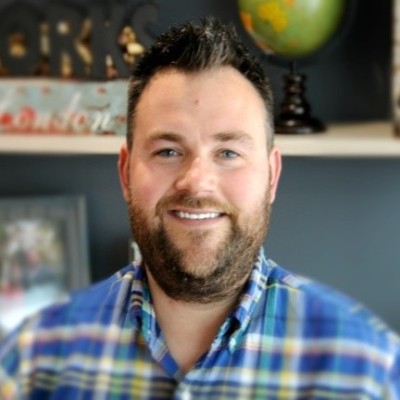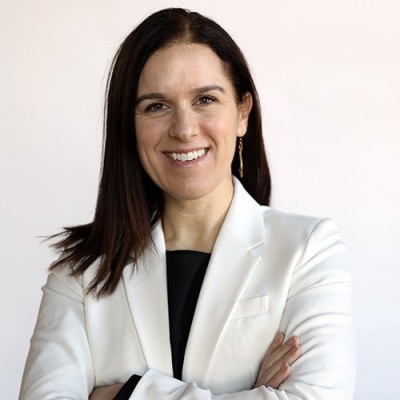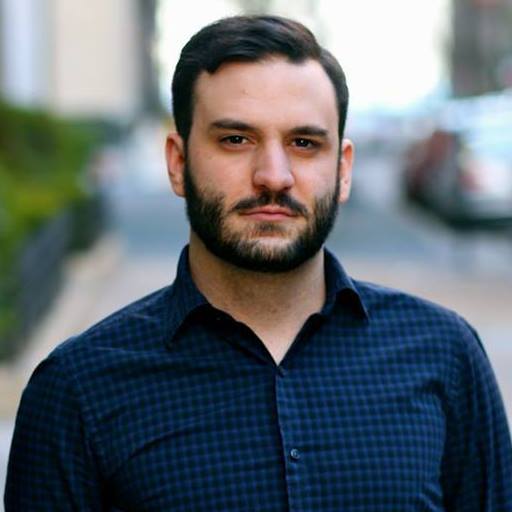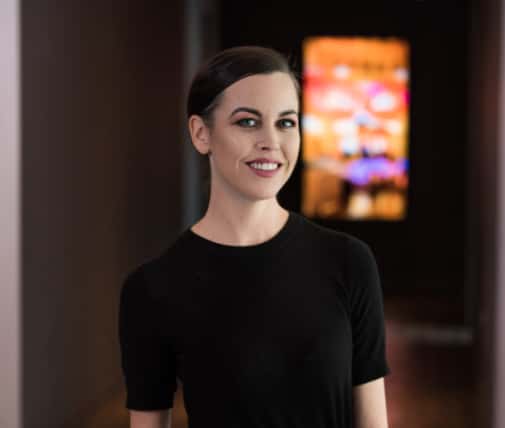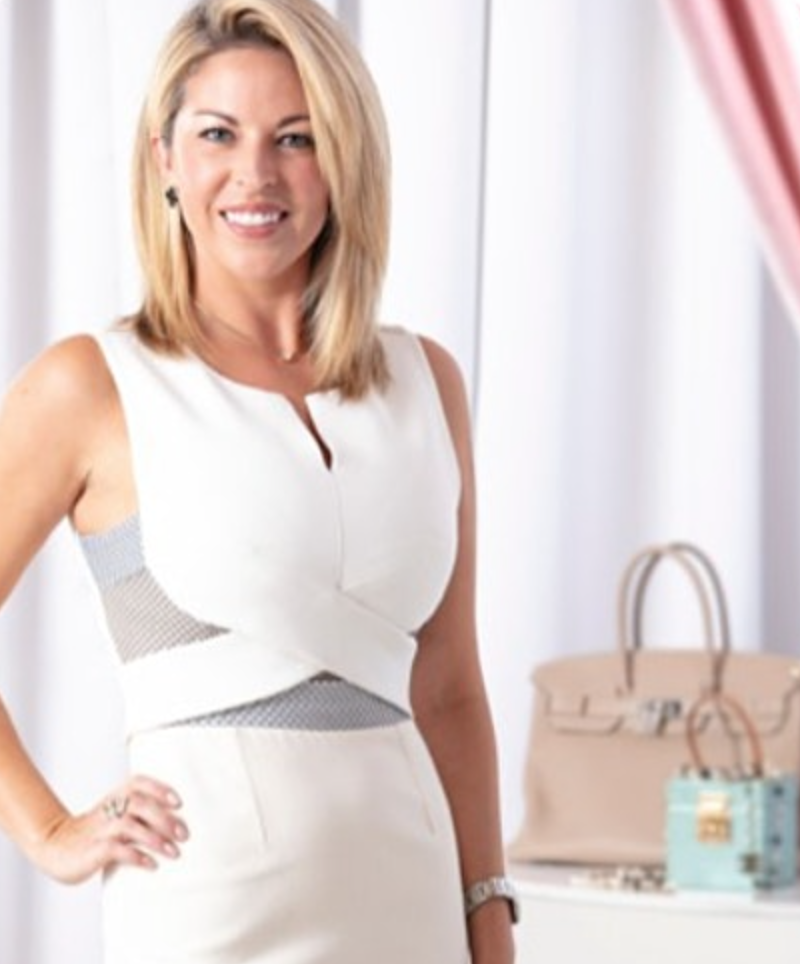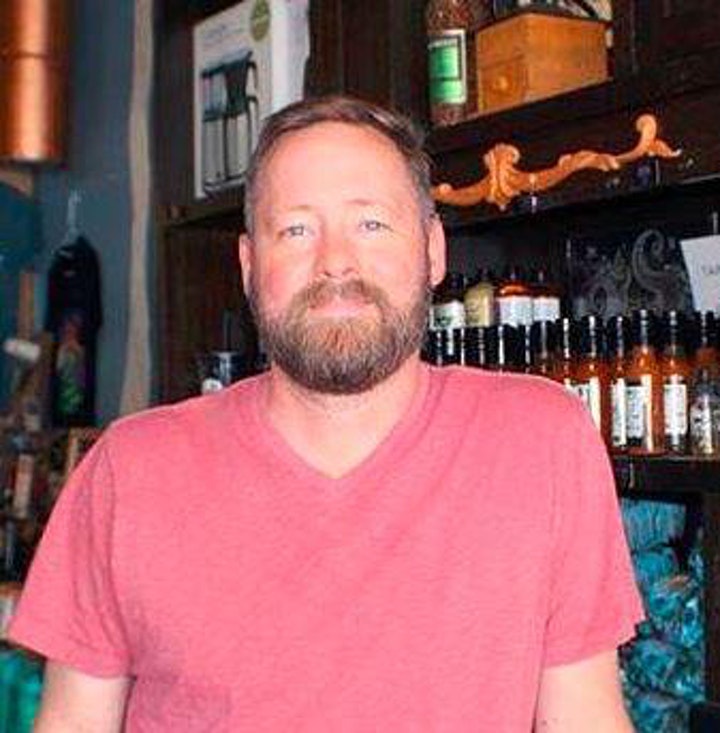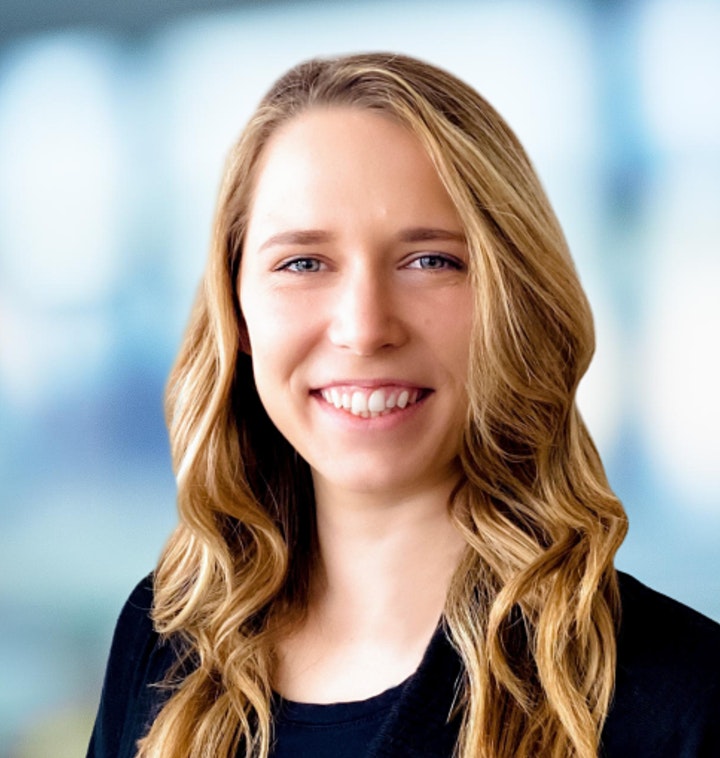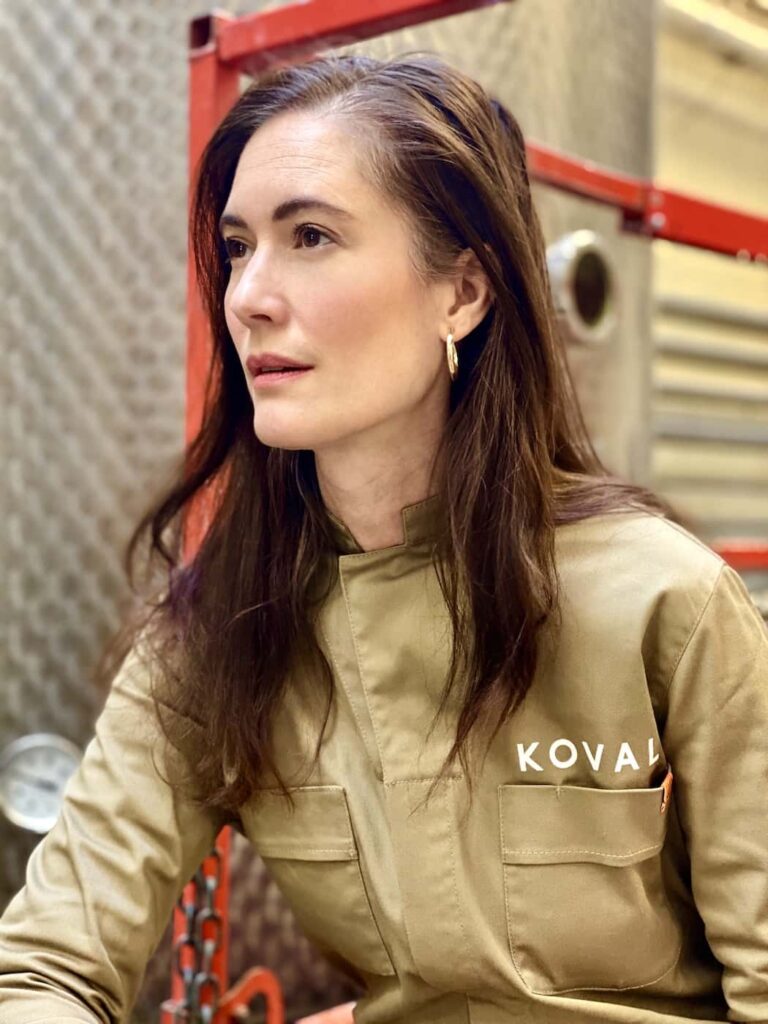Read The Transcript
*Please note that transcription may not be exactly 1:1 to what was stated in the video.
Building Limitless and Protein Bar with Matt Matros | VisualFizz Growth Series
Dan (02:24): I just want to make a quick introduction to the VisualFizz Growth series and VisualFizz. My name is Dan. I’m one of the managing partners at VisualFizz. And we host these Growth Series every two to four weeks. They used to be in person, and we loved having that, but unfortunately COVID made us take a little bit of a different turn. With that being said, we can still stay digital and these videos live on forever. So that’s nice. No pressure, Matt. But today we have Matt Metros, who is a serial entrepreneur based in Chicago. Launched a series of businesses. I won’t get too far into it because my hope is that Matt can give us a quick, brief introduction around what he’s done over the past few years. But beyond that, we’re going to take a very similar approach to the podcast, How I Built This. So we’re going to learn a lot about Matt. Really dig deep. And then at the end, allow any viewers to ask any questions. And we’ll make sure to ask Matt. So Matt, without further ado, really great to have you on here and looking forward to spending the next hour with you here.
Matt (03:38): Let’s dive right in. Open book. Let’s get that [over talk 00:03:40].
Dan (03:40): Let’s do it. Right now, let’s do it. We’re ready. So if you want to give us just a quick intro to some of the businesses you’ve launched. And we’ll dig deeper into that, but if you can give us a quick scoop of the past 10 years or so.
Matt (03:55): Well, I guess we’ll start with why I’m in the Midwest. I was a sports agent for baseball players out of college. I grew up in LA, and then came to the Midwest to go to the University of Michigan. So, I went to UM for graduate school, got my MBA and graduated in 2005. Thought about going back into sports, but instead wanted to do traditional brand management. So I came here to work for Kraft Foods, the head brand manager of Kraft cheese. I can’t say that with a straight face. I’m sorry. Pretty early on in my career at Kraft, I knew I didn’t want to work for a big company, but I learned a lot. And then, I had an idea to start a smoothie store, basically a protein shake, right downtown. So I did some business planning, which we can talk about later as part of this. Liquidated my entire life savings and opened the first protein bar in May of 2009.
Matt (04:49): For those that don’t know, a protein bar is a healthy food, fast, casual restaurant. So in the vein of like a Chipotle. We serve protein shakes, burritos, wraps, salads the whole nine. So I opened my first location in May in 2009, with just protein shakes. Struggled mightily out of the gate, and then added food to the menu about eight months in. And then that’s when things took off. Started raising money from customers. Literally people who I got to know while working in the restaurant. Opened about 20 locations over the next few years, and then sold the majority of the business to Catterton Partners. Which is a preeminent consumer-focused private equity firm. I stayed on and ran the business for about a year, but sort of realized that I out kicked my coverage. The company was a little bit bigger than my skill set would allow. I’m an entrepreneur, not necessarily a restaurant company executive. So I worked a deal out where we hired a gentleman to replace me.
Matt (05:46): And I took some time off and traveled. It was one of the best things I ever did. And then came back in 2015 and started a coffee business. It was right around when bulletproof coffee was a burgeoning trend. This concept of clean caffeine combined with grass fed butter, oil, what have you. I decided to start Limitless Cold Brew. Same thing as with protein bars, where I took my life savings, sold my condo, got an SBA loan and then started Limitless. Started as a coffee business, wholesale mostly, in offices. Launched consumer packaged goods and then opened coffee shops. It was a failure with that too. Cold brew is a tough business and not very large of a category.
Matt (06:34): So through the darn near bankruptcy with Limitless, I sprinkled caffeine powder into my Perrier. I drink a lot of sparkling water. And one day we were decaffeinating coffee beans in our roastery and sprinkled it into my Perrier and said, aha, no, one’s doing, [inaudible 00:06:52] water. This was late 2017. I spent the first part of 2018 cold calling manufacturers, co-packers, bottlers, the whole nine. And then, Dr. Pepper agreed to make my product. So Keurig Dr. Pepper made Limitless caffeinated, sparkling water, and it was off to the races. So started getting the product into retail, adding retails all across the country, and got extremely lucky when Walmart took us national. And then, that culminated in me selling the business to Keurig Dr. Pepper just before the pandemic hit in January of last year. I’m now a paid consultant with Keurig Dr. Pepper, but working on a new startup in media. Trying to tell brand and founder stories. So similar to what this is. I plan on [over talk 00:07:45] we will be telling the story of emerging brands and founders.
Dan (07:50): That’s great.
Matt (07:51): The last few years. I could keep, but I guess you want to [over talk 00:07:51] here.
Dan (07:53): You were busy, huh? Yes. Well, we’re going to dive much deeper. So that is one heck of a background. And it’s interesting you’ve had to pivot a few times, so we’ll talk about that too. So let’s start way back. I know you gave us the year that you graduated from your MBA, but let’s start even further back to your childhood. You said you grew up in LA, talk us through that. Were you an entrepreneurial kid? Did you have that drive? Are your parents creative or run their own business? How did it start?
Matt (08:26): So it’s funny, I do think that entrepreneurship is an innate quality. You either sort of have these risk-taking abilities or you don’t. In my instance though, I was fortunate that I saw it from my father. My father passed away when I was 11. But he was a small business owner. He was a hustler, just like I am. He worked seven days a week. He had a dry cleaners in our hometown. I grew up in a pretty modest hometown in suburban Los Angeles. I wouldn’t even call it suburban Los Angeles. Outside of Los Angeles.
Dan (09:00): Yes. LA is like a big suburb, and then you’re in the outside suburbs.
Matt (09:04): Yes. And then when he passed away, figuratively, not literally, but figuratively, I sort of became the man of the house with my mom, and my sister, and I. And felt that it was my duty to sort of, fight claw and survive. So as early as seventh grade, I was starting ventures. So the first one being a little key chain company, it was called Sports Brats. If you even know what a Sports Brats is, they had the little key chains in all of the major league baseball, NBA, and NFL teams. And they were super neat. And I had my Lakers, Dodgers, and USC chains. And I wanted to have one for my middle school. So, this is pre-internet. I remember writing a letter to the Sports Brat’s company at the time [inaudible 00:09:51] or something saying, Hey, I want to create one for my school. Took the risk, and bought an inventory, these little key chains. [inaudible 00:10:00].
Dan (10:00): Wow. That’s amazing.
Matt (10:03): And sold them to my school. And then did other things like sell candy and whatnot? So the hustle was sort of always there.
Dan (10:11): Yes, no, I agree with you. Actually, a little, almost similarly, when I was probably in junior high, I started a free hug stand at my school. And bought a bunch of wholesale t-shirts, bought a bunch of t-shirts spray paints.
Matt (10:24): Free hugs?
Dan (10:24): Yes, free hugs. And, at one point it was so popular, probably one in every four kids had a free hug… and I was at a school with 3,000 kids. So that’s a lot of kids, probably a few hundred who–
Matt (10:35): [inaudible 00:10:35] this was the t-shirt, the business wasn’t the hugs?
Dan (10:38): No, nothing for hugs. That’s different. That’s a little weird. But the t-shirts and now realizing I sold them for way too cheap. But back in the day, I’d buy the t-shirts. It’s three, $4 for all my materials, costs of goods landed. Do the labor and sell them for like 10, $15. But I’d advocate selling t-shirts for myself.
Matt (10:58): A multi-level [inaudible 00:10:58]?
Dan (10:59): I’m telling you, I was probably 14 at the time. Twelve, thirteen, I don’t know whatever you are in junior high, in high school. But it turned out to be pretty good.
Matt (11:09): Did it become uncool to be wearing the free hug shirt, because so many people were wearing them?
Dan (11:13): No, it flooded over to the next sister school, as well as, the next year that I was already in college. It was in high school. When I was in college that third, fourth year, it kept going. I think it tapered off two years after I left. And so, I do agree, these might be little ventures, but it does come from a young age. That you’re, I want to do something. I want to make my own money. I want to sell stuff. So it’s very cool that you’ve got there early. So what was that?
Matt (11:43): Maybe sold the business to the VF Corporation. The owner of…
Dan (11:45): Yes. VisualFizz bought us out and we canceled the whole deal. There wasn’t enough money in it. So you started the fitness business there. Were there other ones in the process that you started working on during college, during your high school years?
Matt (12:01): So then I got to USC, freshmen at USC and I was always goal oriented. I sort of always had something I was working towards. And up until USC, it was about going to USC. So I was that kid who at five or six years old said, Hey, I want to go to USC. It was good. My dad went there and we lived in LA and we watched the football games, and it was just sort of, I got into it. Although my father was never big into sports. It was something that my mom and I had. So my dad and sister would go ride horses. We had horses, and on the weekends, me and my mom would go to USC football games. So yes, I always aspired to go to SC.
Matt (12:44): So then I got into SC, I was all right, I’m here so now what? Then my next goal pretty early on, maybe around 10 or 11, I heard about this career of becoming a sports agent. And that was sort of where I wanted to put my attention. So I decided, Hey, I want to be a sports agent. So cold called sports agents in LA. There’s not hundreds of them. There’s a dozen or so. And got through to somebody at Beverly Hills Sports Council. And he went to SC, so that helped. And I ended up applying as an intern. So at [inaudible 00:13:23] years old as a freshmen at USC and now interning at the sports agency. And worked my way up through the sports agency, and all through school.
Matt (13:31): It was a pretty awesome experience. Didn’t really experience college much. Which was the impetus for wanting to go back to business school, is because I just didn’t really have a college experience. My senior year, I was in spring training for six weeks. Not even in California, I missed a number of midterms. All my friends were on spring break and I’m in spring training. I’m not super proud of it, but it was what I wanted, to be a sports agent.
Dan (14:00): You do what you want to do. Yes. Listen, it’s the drive. Absolutely.
Matt (14:05): So that was my thing. And then I did that for several years. And then had a Jerry Maguire moment, where I realized I didn’t want to do it anymore. And that’s where business school came in.
Dan (14:15): Is that when you decided to move to Chicago at that point? Or were you–
Matt (14:18): I was going to Michigan.
Dan (14:20): That’s right. Sorry.
Matt (14:21): I’m working for this sports agency. I’m in Seattle, 22 at the time. And was with my middle school science teacher who I still, to this day, have a great relationship with. And we went to a Seattle Mariners baseball game to watch one of my clients. And I was just expressing how unhappy I was working for the sports agency. And mostly, the athletes were great. It was just all the other egos in the industry. It was the agents I worked for. The other agents in the business, or all the people that try to come after athletes, that just made me… I was turning myself into a bad person. I just didn’t really enjoyed the kind of things that I was doing to others. [inaudible 00:15:04] and it was just not me. So I got to expressed over this weekend, how unhappy I was. And Michael he’s, well, just leave. It kind of had never…
Dan (15:19): Wait, what? You could leave?
Matt (15:19): That had never occurred to me that I could just leave. Especially, because you think you’re doing, especially as a youngster, you’re putting in your dues. And I’m, oh, this sucks, but this is what you do when you’re young and you’re putting in your dues. So I thought the suckiness was just this part of being young. When in reality, I just didn’t aspire to be the people that I worked for. And that was a big moment for me. It’s like I’m trying to do that, but you’re not even that neat. I sort of [inaudible 00:15:44] had seen through him and like I said, the athletes were great. It was just all the other egos.
Dan (15:49): Interesting. That’s interesting considering where you’re at now. Which we’ll talk through in a little bit, because it’s in a somewhat of a similar space. But I have to learn more about this new project you’re working on, because it is with talent? We’ll get to it.
Matt (16:04): Whenever you’re ready.
Dan (16:08): Okay. Let’s get there in a little bit. I got a little about myself here. Okay. So you decided at this point it’s time to leave? Which I totally agree with. There has to be a point where you cut off. And I think it’s really interesting, I’ll segue because I did mention How I Built This. It’s one of my favorite podcasts, and maybe they’ll listen to ours one day here. But I did listen to how Hinge got started. And it was really interesting because it happened from a series of breakups. And the founder was just very heartbroken. And essentially, there was a series of pivots that finally created that successful story of what Hinge is, a multi-billion dollar business. So I’m curious to understand, what was that pivotal moment? And you kind of just mentioned it, but what made you get into food? Because it doesn’t sound like that was something you ever really did, in the past.
Matt (16:56): Well, one thing that I sort of have left out of the whole backstory of all this is that I grew up heavy. So I was a fat kid. And it didn’t help that my name was Matt, so that rhymes and fat. So kids could be mean.
Dan (17:10): Kids are mean.
Matt (17:10): So, I just was a heavy kid. And I put on a few pounds over the last few years, but back when I was 22 and I left the sports agency, I committed to a high-protein diet. This was back in 2001, 2002, back when Atkins and the low carb food was starting to take off. It was really the first time that science has debunked the idea of the food pyramid. If you recall, carbs were in the bottom. And, finally we were skeptical about it as a nation. So I subscribed to this low carb diet, and it worked for me, it worked great.
(17:47): I ended up shedding 60 pounds over the course of six or seven months. And just kept it off. So the key thing came for me. It never really was a desire to work for Kraft Foods. I wanted to just do some sort of consumer marketing. So whether it was L’Oreal and women’s hair care where I interned or Proctor and Gamble on dog food, I didn’t really care what the product was. I just wanted to learn consumer marketing. And it just so happened that Kraft worked out, and it was an organization I wanted to join, in a city I wanted to be in. So that’s what brought me to Chicago and to do that food thing happened. I liken it to Malcolm Gladwell’s book, Outliers, where he talks about 10,000 hours. And this concept of meeting 10,000 hours to develop some sort of a proficiency, an expert level of proficiency.
(18:38): And a few examples he cites in his book are, Bill Gates, didn’t just accidentally code Windows in his dorm room at Harvard [inaudible 00:18:47] He went to a prestigious school in Seattle that just so happened to have one of the first mainframe computers that he was coding. So he was working [inaudible 00:18:55] and that’s what allowed him to develop his proficiency in coding, which created Windows. Or like the Beatles weren’t just discovered in Liverpool. They were playing for years, and years, and years, together where they started to develop this orchestra-like proficiency. And for me, food and nutrition was kind of that thing. I lost a bunch of weight while heavily studying nutrition. I kept it off all through business school, and over the years. So much so that I wanted to make a career out of [inaudible 00:19:27] foods. And that’s where I wanted to make my business around, high protein and low carb foods. So, obviously, that was sort of my 10,000 hour moment.
Dan (19:39): Yes, that’s interesting. And it goes back to that phrase that most overnight successes take years to build. It’s one of my favorites because it’s so true. There’s so many brands like, look at Zuckerberg, and all these other guys. And you’re like, you know what? This was not an accidental process. And especially, when you do listen to the podcasts, and watch Shark Tank and all these other. I love the fact that there’s so much out there now. So much knowledge, because even when I was in school, which wasn’t too, too long ago. There was so little that was about entrepreneurship. Unless it’s, get rich quick, figure out real estate and there’s so many verticals you can be in that aren’t real estate, or money management, or something along those lines.
Matt (20:19): [inaudible 00:20:19] when I was coming out of business school in 2005. I went to Michigan, a great school, and this was 2005. So like I said, [inaudible 00:20:25] like entrepreneurs were losers. They were the people that couldn’t get jobs, who wanted to do something entrepreneurial. And it was thanks to Zuckerberg, and Bill Gates, and Elon Musk and Jeff Bezos that they’ve sort of become rock stars over the last eight years. And Shark Tank has certainly fueled that. Now it’s kind of neat, I get to be invited to do shows like this, or how I built things for Shark Tank to exist to sort of celebrate this level of entrepreneurship. It does come a little bit at a cost though, because much like anything that’s in popular media, it may set people up with some false expectations. Or that it seems to be glamorous, or without its drawbacks. I have tremendous mental health issues because of it. I sacrificed a lot within my personal life, and my physical life. It’s not easy. It’s not made for everyone. It’s just showing up [inaudible 00:21:23].
Dan (21:24): No, it’s not. It’s not. And you bring up a good point, which I didn’t even think we’d touch on, but that is a great point. Because when you’re starting a business and everybody thinks, start a business, get rich. Or start a business, live a fabulous life. It’s more like starting a business, figuring out what you’re doing for the next six to 12 months, potentially getting traction. Spend a lot of your time away from the people that you care about or sitting on the computer. You might see those people on the beach, coding something out, but at the end of the day, it’s, you have to be ready for a crazy roller coaster. And I think a lot of times when people come to me and they’re like, Hey, you run a small agency, but one that seems like it’s growing year over year.
(22:05): And they’re, what do I do? I expected it to be really difficult, and a roller coaster, because there’s days where we win a new client. It’s a client we’ve been working for to try to win for three months. And it’s, you’re up here on top of the roller coaster. It’s awesome. And at the same time you get a client that hates you or that something happens or you don’t win it. Or you’re second place, amongst a series of different prospects to become the agency of record. And those are the low points. And I think a lot of people have to be ready for that. And understand that it’s not always up here. That you have to be ready for a very slow incline to finally get to that first peak.
(22:46): So you’re definitely right. And I’ll use this as a segue, because I know we could talk about this for a long time. But I want to talk about protein bars now, because you said you basically sacrificed your life savings, everything you’ve earned. Give us more information about how you did this. And I did listen to how Chipotle got started. It sounds actually very similar in that kind of storyline. So can you explain, why did you start this restaurant? Did you have restaurant experience at all? Did anyone tell you you’re crazy for even thinking about starting the restaurant in River North? Which for anyone not from Chicago, is one of the most expensive real estate in Chicago.
Matt (23:25): All right. That was number two was my River North. Number one was in The Loop, across the street.
Dan (23:32): Oh, so almost just as expensive.
Matt (23:32): Ground zero. I love when people used to say that about the restaurant experience. Oh my gosh, did you have any? I’m, no, but I’ve been to them.
Dan (23:41): Yes, very different.
Matt (23:44): I have a media company. They’re oh you have experience with media. No, but I watch TV. We’re basically creating videos. So no. No experience, but that’s a difference between entrepreneurs and everybody else. The entrepreneur is okay with the lack of experience and almost uses it in their favor. And also loves the lack of experience that brings [inaudible 00:24:02] to the table, but also a big vision for things. So yes, it was October 17th of 2007 and I was working out at a Lifetime Fitness in Old Orchard, which is near Kraft’s. I used to go every morning workout and then I’d get a little shake that they used to sell. And pay $9 for these shakes. And they put these tiny scoops of protein. I must’ve done–
Dan (24:28): DO you know, I used to work at that Lifetime, many years ago.
Matt (24:31): You did, at Old Orchard?
Dan (24:33): Yes.
Matt (24:33): No way. Wow.
Dan (24:34): Probably in 2009/8.
Matt (24:39): Oh, so I missed you. Yes, that’s where I had the idea for, I can’t remember the name of the people that I worked there with. At that Life Café I get those shakes, eight bucks. The Serious Soy is what it was called.
Dan (24:50): They are expensive. Yes.
Matt (24:50): And after a while I just was, what am I doing? And then I started just scooping protein into a baggie, and then I gave it to the folks that work there and they blended it up for $2 for the cost of the milk and the banana. Did that for a year, and then I was, oh, I want to start a protein shake shop. You know, I’m doing this. For folks that may be watching, [inaudible 00:25:10] at Java Juice says, Java juice is pretty popular. Java Juice is essentially a fruit smoothie place, full of sugar, packed with sugar. And I was just skeptical that people were going to start seeing through that, and seeing the juices are just sugar.
(25:29): I was right about that. I was just wrong that I could have an entire restaurant that supported shakes only. So that was tragic. So in anyways, October 17th of 2007, I got the idea and I drove into my office at Kraft. And I got to my desk, I was so excited and I got my email open. I remember writing an email to my best friend. The guy is still my best friend to this day. Subject lines said, this is it, we’re doing this. And I like typed up a whole plan for protein bars, this big, long email. I wish I still had it.
Dan (26:01): That’d be great.
Matt (26:03): And I ended up doing it. It didn’t make sense to start a smoothie shop with another human being. This guy is quiet and like I said, he’s still my best friend, but ended up doing the protein bar. So October of 07, was when I had the idea. So then, when you have an idea, that’s just one thing. It’s one thing to have the idea, and there’s a couple things that happened next between the idea and execution. And the first one is just research. Research around do customers, consumers want this? Research around, does this already exist? Research around how the economics of this kind of business work? And that part was actually one of the easier parts. I think a lot of entrepreneurs sort of skip over.
Dan (26:45): Yes. Because they’re so excited. They’re so giddy to start.
Matt (26:48): There’s something they want to go after, but they need to make sure that there’s an actual business there. That research is what helps. So as part of that research, you have to look a lot into just the financial viability of the business. So my number one source of resource or number one source for information, is publicly traded stocks. So for me, I was able to pull the 10Ks and 10Qs of Chipotle and Java Juice, which told me exactly how businesses like that operate. It was incredibly insightful, but it’s all right there for free. I think folks kind of under utilize that tool. It’s all right there.
Dan (27:24): That’s interesting.
Matt (27:26): And then I did the rest of my business planning just to find out. I knew it was viable to have a shake. Java Juice has proven that, but is it viable to have the kind of shake shop I want, in the kind of location I want, with the kind of size and spaces that I want? So, I actually had a business plan for that. And also how much is it going to cost to do? So in our business plan, I thought that it was going to cost $440,000. That was sort of the number I had. Of course I was wrong. It ended up costing 590,000.
Dan (28:01): That’s okay.
Matt (28:01): So the four 40 was two 20 of all my life savings, and then two 20 of SBA loans. So I liquidated everything, all my 401k stocks and bonds. In hindsight, I was pretty lucky to be a 29 year old and have assets worth $220,000 that I could sell and have the cash. That’s sort of a testament to starting work when I was 12. And working for the sports agency through college, and a mom who wouldn’t let me touch the Social Security money I got after my dad died. So yes, business plan, life savings, and then January 5th of 2008, it’s, you’re kind of the go-no-go decision, which a lot of entrepreneurs are faced with. And then they continue to analyze and they end up getting decision paralysis, and then they never do it. So at some point an entrepreneur, he needs to say, I’m either going to do this or I’m not. And I did.
Dan (29:02): Good, cool. So, there’s so much to talk about. And I feel like this can go over because we’re just at the beginning. But so at this point, you’ve launched, and obviously, the smoothies weren’t enough. And just for anyone who’s not from Chicago, The Loop is the business district. So after 5:00, 5:30 dead. Generally. There are some theaters and whatnot, but not a lot of people live there. And so what was that pivotal moment there, because we’re going to have to hop into the Limitless discussion soon. But what was that moment that allowed you to really grow from one location to two, to you said, up to 20? How did that happen? Because that was, you said it was only a couple of years, two, three years.
Matt (29:45): That was a few days ago, it happened right after I opened. There were people that came in and drank protein shakes. There were people who got it. That was one thing I was wrong with, and I thought it was going to take a while for people to understand why do I need a protein shake? Java Juice is healthy. People got that.
Dan (30:00): That’s good.
Matt (30:00): The problem was I needed to be doing about three grand a day just to break even. And I was doing about two. So I was losing money. I wasn’t going to survive much longer. I go around The Loop, man, it’s Tuesday in June, it must be a holiday or something. Where is everybody? Lines out the door at Chipotle. Lines out the door at Subway. So it wasn’t too hard for me to realize that people will leave their office during the day to get lunch there. So unless you’re selling food, you’re not going to have much of a business. So, in September that year, we opened in May. And in September of that year, I added food to the menu. Literally, just things that I was eating salads and quinoa. People didn’t even know what quinoa was. I had quinoa bowls. I made chili. I created some chili recipes over the weekend. And September 20, 30 [inaudible 00:30:52] that year added food to the menu, and that was when things took off.
Dan (30:57): That’s amazing.
Matt (30:59): And then got pretty lucky because the restaurant industry typically has the worst month in January. That’s a two-fold reason. One, because most people have spent lots of money in December. And reason number two is just that it is cold. Nobody is really going out. There’s not a reason to go out in January. All the reasons to have gone out were in Q4. But in my business, selling healthy foods, January’s one of the best months.
Dan (31:32): Oh yes. The [over talk 00:31:33].
Matt (31:34): I got really lucky because that particular January, January of I guess it would have been, ’09. It was unseasonably warm, [inaudible 00:31:43] or cold weather, or rain I was contending with. So people were out walking, looking for healthy options. And boom, it just took off.
Dan (31:55): Especially because January is when everybody, they’re ahead of their new year’s resolutions.
Matt (32:00): That’s what I’m saying, January and healthy eating go together.
Dan (32:02): That’s great.
Matt (32:03): Unlike most restaurants.
Dan (32:06): That’s cool. So let’s pop it a little further, because I’m watching the clock and I feel, like I said, so much to talk about.
Matt (32:14): We only have seven more hours, right?
Dan (32:15): Yes.. This is a midnight special. I’ll just keep going. So you finally ended up getting acquired and did they come to you? Were you looking to pop out of the business? Or what was the goal there?
Matt (32:29): By this was in 2013, by 2012, so opened the first one sucked, made it not suck. It became really popular. And then individuals were just coming out of the woodwork. Oh my God, I love this place, I come here all the time. And they were bankers, and traders, and lawyers, and like wealthy people that work in The Loop. I’ll see them every day. So I have lots of questions. What is this? Is it a franchise? I’m no man, it’s all me. So I started thinking about new locations, needing to figure out a way to fund it. Because I put everything I had into the first one. So I knew raising money was the thing I needed to do. One human, in particular, helped fund my second location. He’s still my business partner now, to this day. We then raised money for store number three together, through his network and my network. And then that was a huge success.
(33:22): And then four was a huge success, five, six, seven. But what happened with number seven? It was our first one outside of Chicago. It was in Washington DC. August 12, 2012 was when we opened that one. And it’s about three years to the day after the first one. And then, that’s when all the private equity firms came calling, because we had proven that we weren’t just this local hometown thing.
Dan (33:47): Interesting.
Matt (33:47): We’ve proven portability. That we can replicate this, because it was our DC opening, was, to this day, still our biggest opening. I got pretty lucky because in 2012, 2013, there were two sectors of consumerism that were super hot. Sector one that was really hot was just specialty retail. Which is what you would define a protein bar as anything that you can replicate and multiply. Although we are a restaurant, we were really more of a specialty retail. You can have lots of it. Noodles and Company had just gone public. Potbelly was about to go public. Container Store, [inaudible 00:34:24] specialty retail was on fire.
(34:27): And then, the other part of consumerism that was hot was health and wellness. And we were both. So it was like, we were the hot girl at the dance. So, we had inbound product equity and inbound private equity. So for me, it really came down to the decision of, do I partner with private equity or continue to grow the way I wanted to grow? And the decision, at that point, ultimately comes down to how much capital do I need to bring into the business? I could continue to keep raising little chunks here and there. And then keep opening a store, a store, a store. But at that time I was doing a couple million bucks a raise. Each time I was raising a little bit, I wanted to put my foot on the gas. And ended up selling about 60% of the business for $25 million to Catterton Partners, that private equity firm. I went from being the majority owner of the business to now, not. The majority of being a minority and now having kind of a boss. So that was a big rude awakening.
Dan (35:23): Yes. Interesting. Wow. But it’s a very interesting story. I love to do a segment with you on just that. Let’s hop into Limitless Coffee now. Because this was your next venture. You said you’ve put quite a bit into it. And I’m a big coffee person. I love coffee. And you said it was a failure. It was a cold brew business. Let’s go into that. What got you [inaudible 00:35:46]? And let’s speed through a little bit. I don’t want to rush it, so you have to go over, it’s no problem. But what got you into the Limitless business? And how did you even come up with it?
Matt (35:58): Ys. I can go pretty fast. It’s a story of focus or lack thereof. So my thesis with Limitless was, I felt better when I drank a certain type of coffee, so that certain type of wet wash bean that was air roasted. I wasn’t alone in my thesis, because that was the exact thesis that Bulletproof Coffee is talking about. So we say, I felt confirmation of that. I just thought I could market it a little differently in bulk and go to market with it. So, in my [inaudible 00:36:30] that the business with Limitless that was brilliant, was doing kegs of cold brew into offices. I had this beautiful [inaudible 00:36:35] of business doing a couple million bucks. It was just me and a couple of guys in a truck. It was awesome. And sometimes, I think I wished that, I maybe had just stayed doing wholesale into offices.
(36:47): We had the Chicago Cubs. That’s how I got the Jake Arietta Jersey. He was a huge drinker. We were at LinkedIn, and Facebook, all the trading firms, we would supply them with a kegerator, and then sell them [inaudible 00:36:59] like the Hewlett Packard model. Give them a printer for cheap and it’s all [inaudible 00:37:04] beautiful business. But then I lost focus or got greedy. I don’t know what it was, but I wanted to ultimately go into retails or grocery stores with our product, and then open coffee shops. So that’s what I did. And the bottles were just a sucky business. It’s just a small category. People don’t buy coffee at grocery stores. They buy it at freaking Starbucks. That was a huge failure.
Dan (37:34): That’s interesting. You bring up a good point. I’m always a big fan of the Levi Strauss story. You don’t go mining for gold, you sell them jeans, you sell them shovels. So you went in there under the radar as co-working facilities and office space perks were coming about. But maybe it was just wanting to be larger. That’s interesting though, because I’m a big coffee drinker, but I guess you’re right. I don’t really buy coffee off the shelf. But then you came up with this idea, you talked about it a little bit briefly. And you pivoted quite a bit based on just almost luck. Just being there in the right place. And so did this caffeinated, canned beverage, was it substantially larger than the other business? How did that grow? Was it the partnership with…?
Matt (38:28): Okay. Dr. Pepper just made the product. For me, it was about knowing something that people wanted to buy. I was selling this so no one wanted to buy it. So I had a decision to make, continue to fund this? And think about consumer products because you don’t make money early on. It’s not like I could just keep it small and keep generating profits [inaudible 00:38:52] as profitable as a protein bar, for example. The stores were profitable and then if I didn’t want to grow, you just keep the one. With consumer products, you just can’t do that. You have to fund it to grow it. So I was staring bankruptcy in the face, so it was only out of mere survival, the same thing with protein bars. It was only out of survival, that I realized, holy crap, I need to start selling something that people want to eat. Lemons. I needed to start selling something that people want to drink. So that was really the pivoting point. It is not being rigid and knowing that I got one more shot.
Dan (39:28): How did you know that people wanted to drink it? Because this is such an interesting market because as you mentioned, that doesn’t exist. Do you have caffeine when you drink pop? But it’s not caffeinated pop. You know what I mean? You’re getting something out of it. And I think a lot of people who don’t like coffee will drink Coke or Pepsi because of the…
Matt (39:48): The thing is that, unlike with the cold brew, I wasn’t solving a problem. But with the sparkling water caffeine, I was. It wasn’t a non-soda option that provided this kick and La Croix didn’t have caffeine in it. La Croix’s super popular. So I just solved a bigger problem or I solved a problem that more people had. I bet that more people are looking for something to help them kill diet Coke. Then just a cold coffee that they could get anywhere. So for young entrepreneurs that think they solved a problem, just ask themselves. They’ve just got to ask themselves. How big is this problem? Is there [inaudible 00:40:27] in that, and oftentimes I will see entrepreneurs try to tell themselves that it is. Just like I told myself that cold brew is a big problem. It’s not.
Dan (40:37): That’s interesting. And this dates pre the boom of seltzer, which was probably about four years ago.
Matt (40:44): It was part of the boom era. The boom was [over talk 00:40:46].
Dan (40:46): Was it during the boom or right before?
Matt (40:49): It was La Croix.
Dan (40:50): Well, rather the alcohol stuff. Yes. So La Croix has been around forever, but when did that start to grow?
Matt (40:57): What really, burgeoned in like 2015, 2016, they were getting a ton of office distribution. And then that led to retail distribution. And people realized, oh, there’s this neat thing that’s zero calories, but it has some flavor in it. That’s great. And there was nothing else that had zero calories with some flavor in it. And in this instance, bubbles. So La Croix took off. So that’s what started the seltzer moon. As it relates to the hard seltzer industry that shouldn’t have been too hard to have predicted either, because hard seltzer as a category is really just a convergence of a couple of trends. Trends of sparkling water, which is zero or low calories. And the people who want to drink alcoholic beverages without lots of calories. So it all came together.
Dan (41:42): And sugar.
Matt (41:43): Right. Exactly.
Dan (41:44): It’s a big one. That’s interesting. And so, let’s speak through, I know we’re going to get into the time a little bit, of the Q and A. But how did that scale? What was the next step? How was the acquisition? And we don’t have to get into too many details, but what was the acquisition process there?
Matt (42:02): It all happened really fast. Fortunately I had done a lot of work with Cold Brew. I knew who all the retail buyers were, because I was trying to sell this thing for two years. And I’d go to retailers and they’d be, God, do we need another cold brew brand? There’s 15 of them right now. But when I called them on the water, it was different because the [inaudible 00:42:23] was booming. Sparkling water was a couple billion dollars, cold brew was maybe 200 million. And I was doing something different. So it was okay. So I was able to get the attention of the retailer, much easier. So getting on the shelf was much easier with the water than it was with the coffee, because this is different. It was a different product in a [inaudible 00:42:42] category. So then it just, again, took off. But the thing that really was fortunate for me, it was my national launch at Walmart. So getting in all 4,400 Walmart stores across [inaudible 00:42:56] was pretty unheard of for a startup brand. And we got it. So thank you.
Dan (43:02): Yes. And it makes sense because you had the distribution with Dr. Pepper.
Matt (43:07): And they didn’t want the distribution, they wanted the manufacturing.
Dan (43:10): The manufacturing. And then you also had a more relatable product because I think a lot of people aren’t willing to potentially pay a premium on coffee. When they could get Dunkin’ Donuts, make it at home, et cetera,
Matt (43:22): No, they are willing to pay a premium for coffee. They just already have a number of places that already do it. [over talk 00:43:29] corporation.
Dan (43:29): I guess I’m thinking like the average American. Where do they want to spend those dollars? And is it a caffeinated water that’s healthy, that’s going to be zero calories, or is it coffee? And how many can you drink per day? Also? Would they be drinking more of these caffeinated waters?
Matt (43:46): The difference is there was, coffee doesn’t have a problem. With soda, so I was going after the coffee industry, which didn’t have a problem, you didn’t really need to switch to Limitless, or any cold brew for that matter. But with sparkling water, the problem is we’re going after diet soda, which is horrible for you. People are looking for a man, I hope. No one ever says, man, I wish I drank more diet Coke. People aren’t buying [inaudible 00:44:12] quit diet Coke. Now certainly, there are some people who never quit it and that’s fine. But, people are looking for an alternative to diet sodas or regular sodas for that matter. So that was the big difference. Coffee, there’s nothing wrong with it. Starbucks, Dunkin’, whatever, that’s cool. There’s nothing wrong with it. [over talk 00:44:32].
Dan (44:31): There’s just a lot of options.
Matt (44:31): There’s nothing wrong. That’s why I said that earlier about finding the problems. [inaudible 00:44:36].
Dan (44:39): Oh, very cool. Okay. Let’s hop into Shopflick Studios. So this is what we were talking about. Half an hour ago, you were in the business of dealing with stars, or big shots, or individuals that are a little bit more in the fame and media industry. So what is Shopflick? Because, I’ll be honest, I don’t really know quite as much as I should.
Matt (45:08): We haven’t really launched yet.
Dan (45:08): Well, there you go. I was, how could I not know, I don’t know enough about this. This is the formal launch party guys.
Matt (45:17): It is. So the thing about Shopflick, this past summer, my wife and I were expecting our first baby. And because of COVID, we couldn’t go to BuyBuyBaby to test drive strollers. That’s the first big decision that you make when you have a baby on the way. It’s like, where are you going to put that little guy? Well, the websites of all the brands were boring and not dissimilar from one another. And all the review sites were biased. So I found the best experience of figuring out what a baby stroller was was going into the park and talking to couples. Hey, what do you like? Show us how it works. So that’s when the light bulb went off on live streaming of retail. Which is what the category, I wish I could take credit for it, but in China, it’s how retail gets done with Taobao and a few other few others.
(46:04): So I just said I wanted to do it in a certain way. Knew I didn’t want to do Shopflick by myself, like I did with Limitless and Protein Bar. So called some of the best people I knew. And one of the first people that came to mind was a woman who I’ve known from Michigan. Who was very early on in a business based in Chicago called Trunk Club.
Dan (46:28): What?
Matt (46:28): They sold to Nordstrom. So I called her, I think it was early October. So [inaudible 00:46:33] I’m thinking about this idea. And she says, man, I wish I could do this with you. I said, no, no, no, that’s why I’m reaching out to you. Why can’t you? Let’s talk. So she drove to Chicago. She lives in Ann Arbor and we spent a couple of days white boarding the idea.
(46:47): And now, here we raised close to a couple million dollars from some local VCs, and are making a go of it. So essentially, what is Shopflick? Shopflick is a network. So we’re a network to celebrate the culture of shopping and consumerism. So much like HGTV celebrates DIY culture, and Food Network celebrates, well, food. Shopflick will celebrate consumerism. So we’re going to tell a story. We have a bunch of television shows that you’ll watch on your phone, on your website, or on your TV, or on YouTube. A bunch of shows that celebrate consumerism. We will have shows that are funny. We’ll have shows that are serious. We’ll have shows that you’ll laugh at, you’ll cry, we’re building a portfolio of television shows now, that we’re shooting as we speak. And we hope to go live betta-fish with content in about a month. So mid to late May.
Dan (47:42): And what is qualifying a show? Is it a 30 minute show, like we’re used to, or is it kind of like a short?
Matt (47:51): So, in today’s media world, it’s not really what it used to be. Where there’s 30 minute blocks, and you either have a 30 block or a 60 block. And you’re either 22 minutes or 44 with the rest being commercials. In today’s streaming world, it’s sort of thought of as a short-form or long-form. With short-form in that six to 12 minutes, and then long-form in that 20 to 35 minutes. We’ll see, once we actually edit things through, but that’s sort of where we’re targeting, is a basket of them. So a couple longer form shows. So, Breaking Through is one of our long-form shows that stars Melissa Chastain, who’s an amazing TV personality. She’s done E! , Bravo, and NBC. She will tell the story of mostly female founders who’ve overcome adversity.
(48:40): So our first episode is about a woman, Gloriana Rydell, who has a jewelry, retail chain and brand called Gorjana. Mostly in the west coast. And her story is about coming here from Serbia as a youngster, and starting this jewelry brand. Our next episode will be about Sarah and Ben Jensen, who are an amazing couple that live in LA. Who had a 14 year infertility journey. They just couldn’t get pregnant. And then, finally Sarah’s sister gave birth as a surrogate to their first child. And then Ben’s sister gave birth to their second child as a surrogate. But along the way, they learned that it was hormonal imbalance that was causing a lot of their infertility. So they started a branch, Hugh & Grace, hughandgrace.com of hormonal imbalance products. We’re telling those stories on behalf of them.
Dan (49:32): Interesting. So it’s almost like…
Matt (49:37): Like How I Built This. It’s like How I Built This with a click to buy.
Dan (49:39): That’s very cool. I actually am really excited. You have to send it to us so we could put the link down in the channels and everything. So that is very cool. Definitely keep us updated there. So I’m gonna keep that as our time, at least for us to chat. I have a number of questions here, individuals who are listening in, feel free to ask those questions, or send them to the VisualFizz accounts as well.
Matt (50:02): All hundreds of thousands of people have sent in a question. So we have hundreds of thousands of questions.
Dan (50:06): Yes, we have a ton. We’re going to create basically, a dictionary of long amounts of questions for Matt to focus on for the next six months. He’ll be busy. Let’s see, what are we going to talk about today? Okay. How about this one? So this is I think important for a lot of people in the consumer space and starting. There’s quite a few consumer packaged goods. There’s D to C now, how did your partner partner with Walmart? How did that happen? That’s a pretty large partnership.
Matt (50:35): One of my good friends is a guy named Peter Ray Hall. He started our X-bar, which was obviously a massive asset of itself. And he used to always say, you’ve got to fish where the fish are biting. And what means is you have got to sell your product where the type of people who want to buy it, are buying stuff. And in my instance, Walmart, they wanted innovative beverages. They came to me and they said, Hey, do you want to come talk about building this functional beverage set? And a lot of people would say, oh, well, how did you know your product will be ready for Walmart? Is it right for the Walmart shopper? Do the Walmart shoppers drink water? That is right. Now, that’s not for everybody. Some consumer products companies should have or do you have a different channel strategy? Maybe their channel strategy is to focus on natural retailers, like Whole Foods. Maybe their channel strategies to focus on convenience store style outlets. My channel was Where’s water sold? Walmart sells more water than [over talk 00:51:37].
Dan (51:39): We just start putting some kegs of that into school water fountains, and college water fountains, and then you’ve got caffeinated water fountains.
Matt (51:48): That wasn’t my channel strategy. My channel strategy was [over talk 00:51:48].
Dan (51:48): No, I know I’m just joking. No, that’s very interesting though. And what a great quote. Just thinking that way, because it’s such an obvious statement, but it’s something that’s so under-qualified when it comes into the real world, because everybody’s, oh, this, that. Just go for it. And sometimes it’s much easier said than done. But in this case, I think it makes a lot of sense. You have this product, people are going to buy it. They buy this, that the others that are relatable product lines. So why wouldn’t they purchase yours, which is a new kind of a new product in that space?
(52:25): Very cool. So this is a good one, because I think there’s a lot of entrepreneurs that are fiddling with the idea of getting a co-founder. And that’s not an easy thing because you really have to trust this person. You’re getting in a relationship with this person for the next three, five, 10 years. And they have access to all your funds. You talk to them every day, all this stuff, it’s a tough decision. And so it seems like you started off taking it on your own, but you found you really wanted to bring on a co-founder. Walk us through the difference between starting yourself, and then finding an opportunity where you’re, you know what, a co-founder makes sense now. What’s your thought on having a co-founder and not having a co-founder?
Matt (53:12): In general, should it happen organically? In the instance of a protein bar, I thought I had a co-founder, my best friend. I said in the subject line, we’re doing this, right? But then, organically, it just didn’t make sense to have a smoothie shop with two MBA holders, as owners. It didn’t make sense. Limitless sort of the same thing. It was going to be me and my thing. And I brought people in to help start it, but it was really my business. And in the instance of Shopflick, I knew I was starting a business focused around shopping. Our core viewer or consumer is a 30 plus woman. So by that regard, I felt disingenuine doing it by myself. Now, I would have done it by myself, had I not been able to find someone who organically fit with what I was trying to do.
Dan (53:59): Sure.
Matt (54:00): And that’s where Lindsay came in and it’s been a perfect, well, not a perfect marriage. No marriage is perfect. It’s been a perfect fit. Her skill set compliments, mine, what she wants to focus on and do compliments mine. And we make decisions together. Is it easy? Fuck no, it’s so hard, especially when I’m so used to doing everything by myself. And she’s used to doing everything her way too. So it’s not easy, but it had to happen organically. I don’t think I would have put a posting searching for a co-founder. Which is what some people do. And there’s actually even some organizations that, life On Deck, where they pride themselves on helping you find a co-founder. No. Just go start a business and if it makes sense that you bring people along the way then do it. That’s sort of what I think. Just like with dating, you don’t go out looking for a wife. No. I know, figuratively, you [inaudible 00:54:53] You go looking to court people and it turns into marriage.
Dan (54:59): Absolutely. We have only a few minutes left, but I think one very crucial question for all entrepreneurs. And I think a lot of the people who watch this are entrepreneurs, or want to be entrepreneurs . What qualifies? What allows you to be successful building? This is two businesses now, and multiple in the process that you’ve helped to grow and you’re a part of. If you were to sum it up into just a few sentences, what is the qualifier of success for businesses, and for being a business owner?
Matt (55:37): I think it’s solving a problem and getting people who want to pay for that solution.
Dan (55:42): Yes, absolutely.
Matt (55:44): That’s about as simple as it is. So that’s really all. Which it sounds crazy, but oftentimes entrepreneurs just are wantrepreneurs they just want to start something. And they’ll start something that’s really not that big of a problem. Or if it’s a problem, it’s not a problem so much that people want to pay for it. Because that’s a nice little solution, but am I willing, is it that much worse than what I’m already doing?
Dan (56:07): Yes, you’re definitely right. And I think that’s what you mentioned long ago, and in the beginning of this whole conversation. Which was doing your research upfront. And I think one thing I’ve learned is if you ask your parents, your friends, and all of these other individuals, Hey, is this a good idea? And they’d be, yes, absolutely it’s a great idea because they want you to succeed. And it depends, I have Russian parents and they’re very forward if they don’t like the idea. They’re like, no, it’s not a good idea. But I think the big thing is asking people you don’t know. And you brought that up, talked to people that you don’t know, and that would really be honest about something. And see what their thoughts are, and see if there’s a big enough pool of fish that would actually pay for your services, and what they would pay. So would you say that market research is pretty fundamental in building out something?
Matt (56:59): Talking to the people who you want to buy our product before you have it makes sense, but it’s hard to do that. And I even joked that buyers are liars. Buyers will tell you, like your friends and family, Oh yeah, that sounds great. But until you actually do it, and you do it with conviction. It doesn’t really matter.
Dan (57:19): Yes. There’s a phrase we use sometimes, because I’ve launched a couple of businesses that weren’t as successful in the past, years ago. And it’s, everybody will love your idea until you ask for money. And then everybody is quiet. And so I think that’s something, like you said, is somebody willing to pay for this thing? And in the case of two food based businesses so far, if they’re hungry and they like it. Yes, they’re going to pay for it. We have clients who need marketing, and they don’t want to do it and they’re not people that are marketers, so they pay for it. And that’s the beauty of being an entrepreneur. But Matt, I really appreciate your time here today. This was awesome. We could have easily gone for another hour here.
(58:03): The floodgates have opened and everybody just wants more of you. But we can only give them so much. But I really appreciate it. Once again, everyone, this is Matt Metros. He made sure that I said his name right. and I think I got it.
Dan (59:29): Thank you very much. Have a good one.

